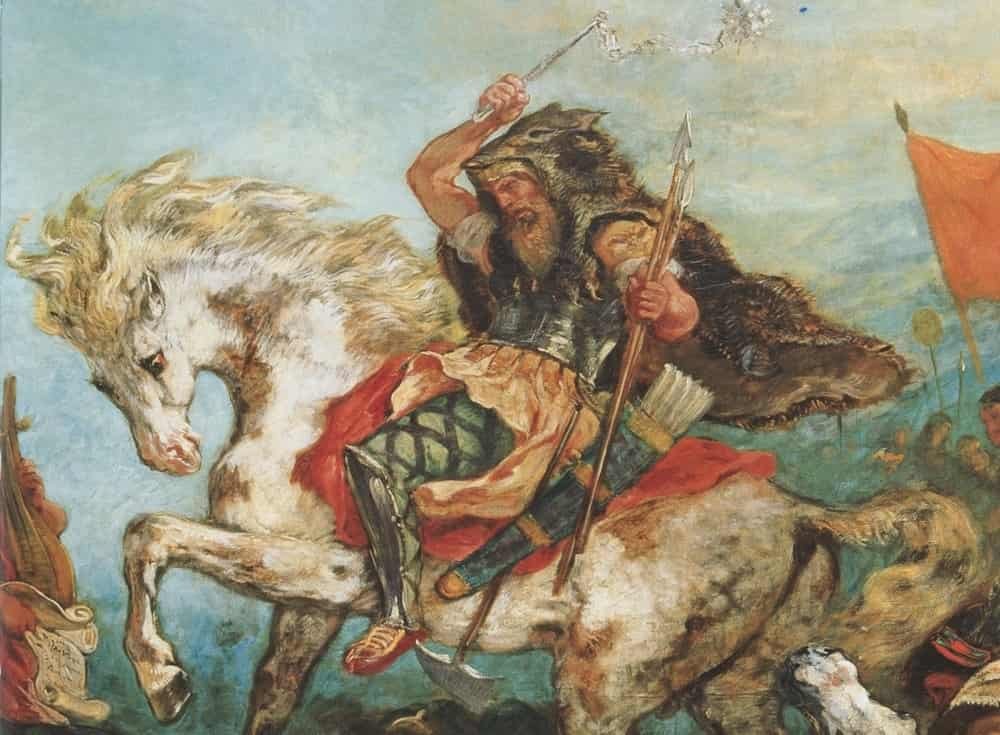Attila, King of the Huns
Who is King Attila? Who are the Huns? Some scholars, academic, intellectual believe that the Huns were a Turkish tribe descended from the Xiongnu, a confederation of nomadic tribes from present-day Mongolia that unified much of Asia in the late 3rd and early 2nd centuries BCE.
Looters and bloodthirsty: who really were the Huns?
The Huns plundered much of Europe and were blamed for the downfall of Rome. But the archaeological record suggests a less violent legacy.
What language did the Huns speak?
Turkish language.
It seems that the Huns spoke a language of their own, but few traces of it remain and its linguistic family is still subject to debate. According to the dominant theories, it would be a Turkic language, but other languages were spoken in the Hunnic space, including East Germanic languages.
History: Attila King of the Huns
Around 370, the Huns invaded much of Western Europe, conquering Germanic tribes and pushing others out of their expanding territory. But do these nomadic people deserve their disproportionately violent reputation?
It is difficult to answer this question. The Huns “remain deeply mysterious”, writes historian Peter Heather, in particular by the few written documents that have come down to us and by their obscure origins.
These nomads are said to have originated in present-day Kazakhstan, and ventured as far as the eastern steppes around 350 AD. Some researchers believe that the Huns were a Turkic tribe descended from the Xiongnu, a confederation of nomadic tribes who came of present-day Mongolia which united much of Asia at the end of the 3rd and the beginning of the 2nd century BC.
As the Huns moved along the Black Sea, they attacked anyone in their path, Vandals, Visigoths, Goths – among others – who fled to Rome. These migrations destabilized the Roman Empire and contributed to the murderous reputation of the Huns.
Reputation and acts of King Attilla
Between AD 440 and 453, he led hordes of Huns across much of Europe, including Gaul. Along the way, he pillaged mercilessly, earning himself a terrible reputation, one that historical accounts describe as a “Scourge of God”, guilty of unspeakable acts of terror as soon as he entered new territory. (Read: Attila, the barbarian who challenged Rome).
But the archaeological record tells a very different story. In 2017, archaeologist Susanne Hakenbeck analyzed Hunnic bones unearthed in Pannonia, an ancient region of the Roman Empire (modern Hungary). The isotopic analysis of the bones revealed that Huns and Romans coexisted and made cultural exchanges. The Hunnic story “was not necessarily just a story of conflict, but rather a story of cross-border exchanges, cross-border adaptability”, explained Hakenbeck to our colleagues from the Washington Post in 2017.
Attila never invaded Rome itself, and his empire collapsed around AD 469. Nevertheless, the barbaric reputation of its people endured. The Greek historian Jordanes, writing in the 6th century AD, called them a “treacherous tribe” (guilty of or involving betrayal or deception) and they were widely associated with the fall of the Roman Empire. However, modern historians believe they played a less direct role in its dissolution. Some believe that the inherent instability of the Roman Empire actually made it vulnerable to barbarian invasion.
The fearsome reputation of the Huns has also played a role in modern conflicts. After German Emperor Wilhelm II encouraged his soldiers to be as ruthless as the Huns in a speech in 1900, the term came to be associated with Germany.
During World War I, the term “Huns” was widely used as an epithet to describe Germans.
Today, it still refers to a barbaric people – but a people who might have had less power than is implied.
What is the origin of Attila?
Attila, born around 395 in the Danube plains and died in March 453 in the Tisza region in present-day eastern Hungary, frequently called Attila the Hun, was the ruler of the Huns from 434 until his death in March 453.
Sources: PinterPandai, King’s College London, The Guardian, World History, The Washington Post
Photo credit: Web Gallery of Art / Wikimedia Commons (Public Domain)



